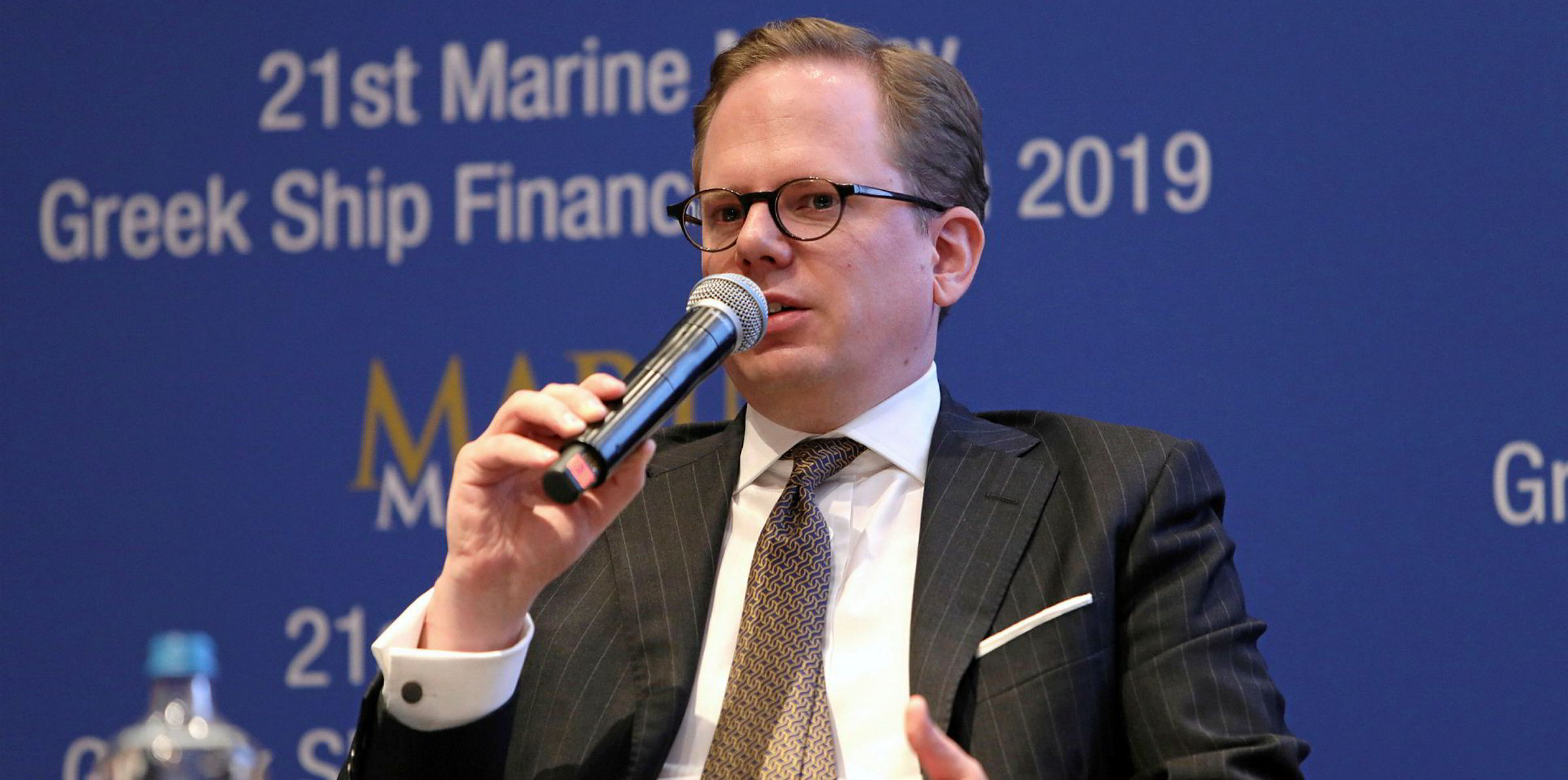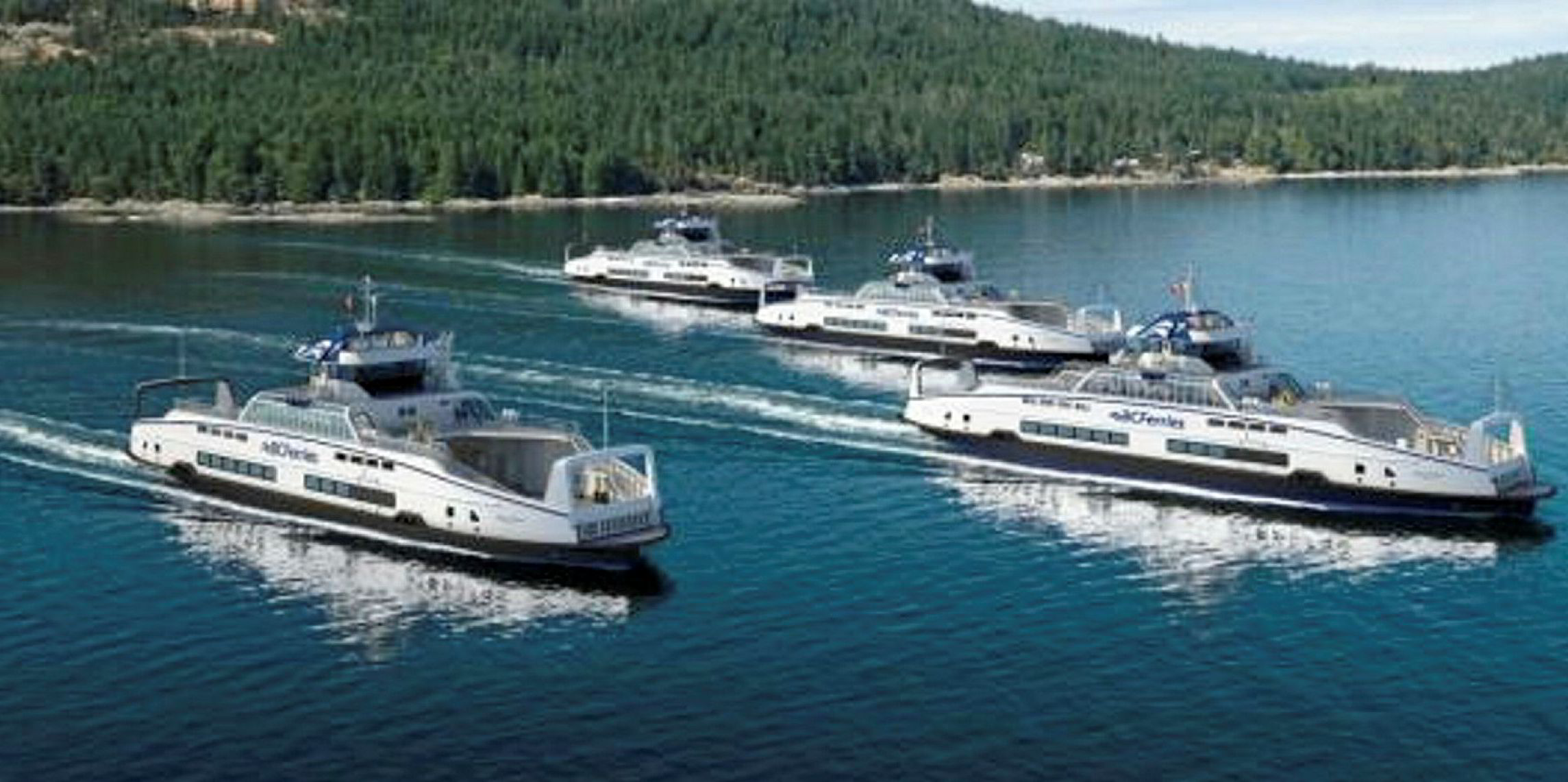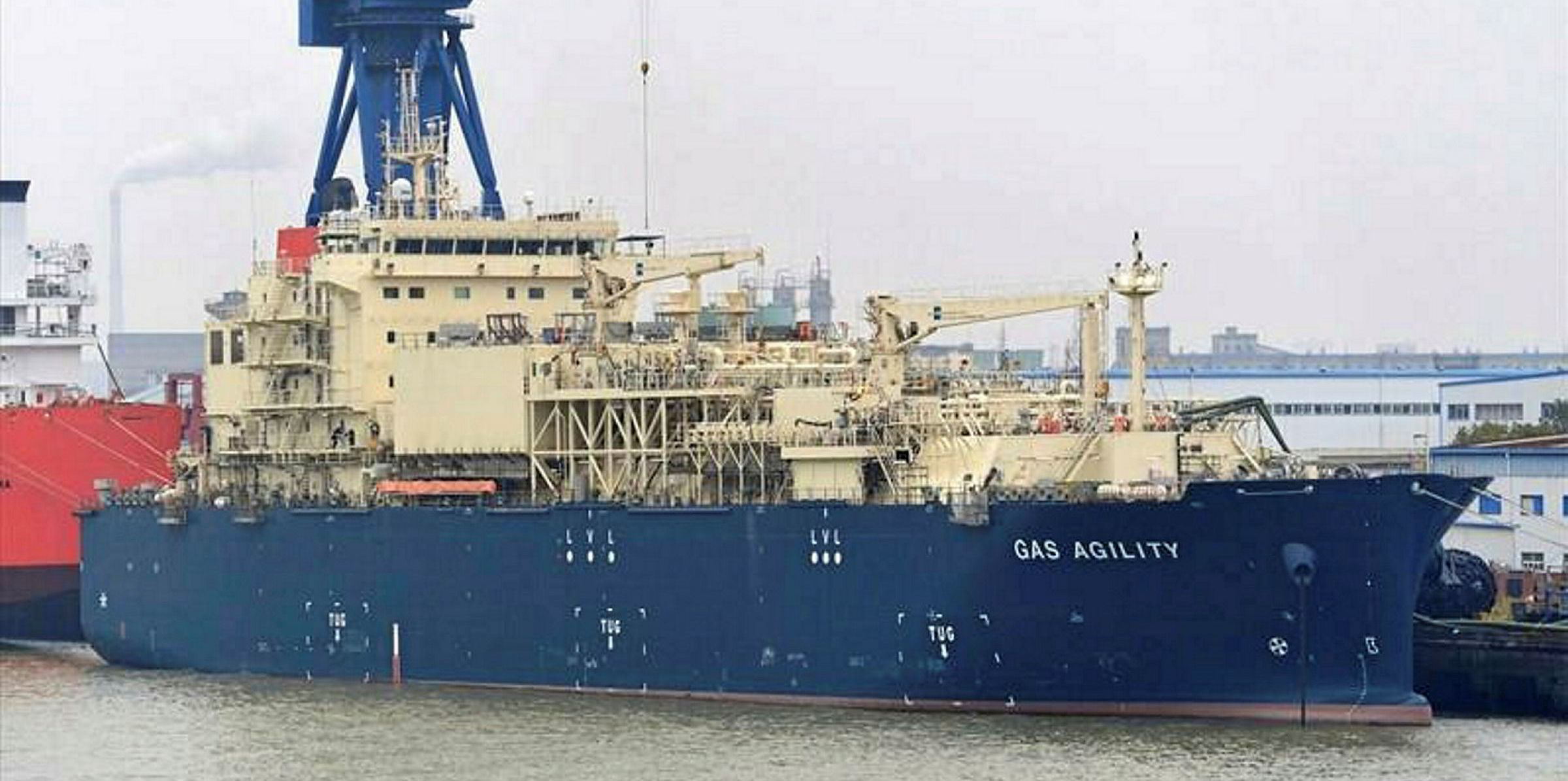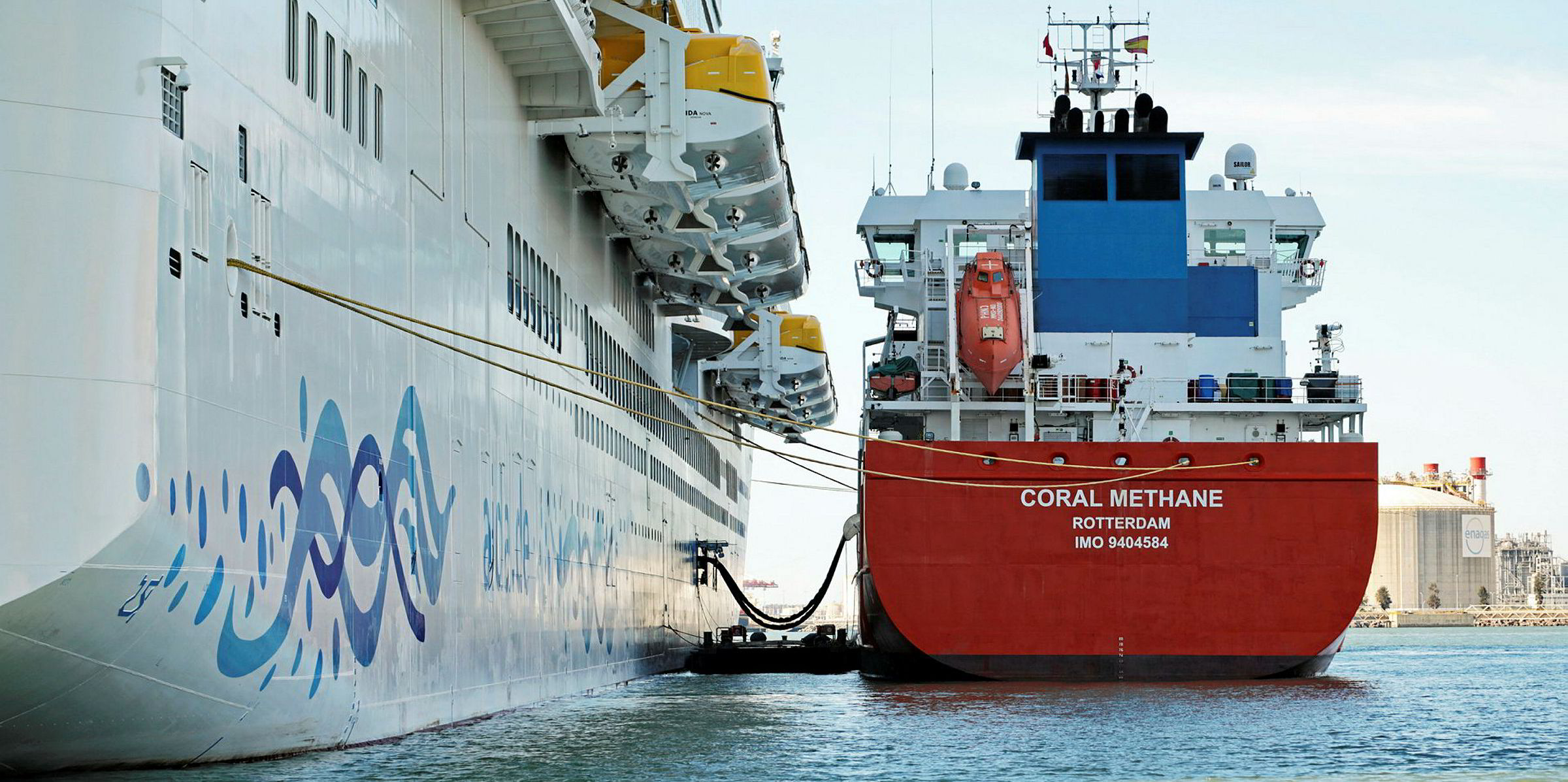With the shipping industry’s innovation efforts set to focus on decarbonisation in the coming decades, some are wondering whether it can learn a thing or two from other sectors.
Using electric-car maker Tesla as an example, First Ship Lease Trust chief financial officer Markus Wenker suggested existing players sometimes might not be capable of initiating profound industry changes.
“We consider the development of commercially viable net-zero emission technologies and bunker fuels, including the infrastructure required, the number one challenge for the industry,” Wenker said.
“However, we can observe in other industries, like the automotive industry, that it requires a disruptor [such as Tesla] to accelerate change and innovation.”
Tesla drive
Tesla, led by entrepreneur Elon Musk, is widely thought to be transforming the sector with new ways of manufacturing and selling its products.
The company has managed to commercialise electric vehicles at an unprecedented scale, arguably putting road transport on a radical path towards decarbonisation.

Its emergence comes despite some existing car manufacturers being highly profitable and well capitalised, and who were supposed to be able drive such innovation themselves, according to Wenker.
“In contrast, the shipping industry is capital intensive, has been suffering from low returns over the past decade and is highly fragmented,” Wenker said.
“These factors make it even more difficult to drive innovation and almost impossible for a single disruptor to make an impact.”
Shipbuilders in distress
Following four consecutive profitable quarters, Tesla leapfrogged Toyota Motor Corp to become the world’s most valuable vehicle maker by market capitalisation in July.
At the same time, many shipbuilders remained financially stressed due to years of limited newbuilding demand.
Some better-performing ones have stayed afloat on government financing and state-funded orders, but they are under pressure to consolidate and reduce expenses.
“The shipyards ... are too busy with just surviving,” Clarksons Research non-executive president Martin Stopford said. “They're constantly squeezing the man hours and trying to get the cost down.”
Dominik Schneiter, who oversees the research and development team at engine designer WinGD, said shipbuilders are slowly showing more interest in developing low-emission vessels.
But most yards remain passive and require design proposals from their customers in such projects, according to Schneiter, who holds the title of vice president.
“80% to 90% of the shipyards will have a wait-and-see attitude,” he said. "As long as there is no customer clearly requesting it, they will not do too much."
A difficult task
Powered by lithium-ion batteries, Tesla’s electric vehicles have a central, digitalised control system even though the equipment is supplied by external companies.
Some shipping experts have long believed that vessels should adopt network technology to link on-board engine, auxiliary power and machinery, navigation, cargo handling and other systems to reduce fuel consumption as an initial step towards decarbonisation.
But those efforts are frustrated by industry fragmentation.
“The situation is, in most cases, that components are being procured or delivered by different suppliers,” Stefan Goranov, WinGD’s digital and hybrid programme portfolio manager, said.
“The problem comes when these components are put together and have to work together as a system.”
Stopford believes the solution would be to establish a common standard and protocols for on-board equipment, rather than hoping that any single player can integrate all systems.
Compared with electric cars, the construction of vessels generally involves a larger number of systems and pieces of equipment, and are more costly.
“The equipment manufacturers are all trying to grab that space for themselves,” Stopford said. “They want to be the monopolist to run the whole ship. It’s too big a job for one company.”
Doing things Incrementally
So far, the shipping industry has largely embraced a step-by-step approach to reduce greenhouse gas emissions.
Some major operators, such as Carnival Corp and CMA CGM, have ordered LNG-powered newbuildings despite their higher costs.
Coupled with energy-saving appliances, such as rotor sails and digital voyage optimisation tools, LNG propulsion can help shipowners meet the International Maritime Organization’s medium-term goal to cut carbon intensity by 40% before 2030.
Some of those projects have needed support from other stakeholders. Earlier this year, AET signed up for two dual-fuel VLCCs on the back of Total’s long-term charters.
“Today, the infrastructure to supply LNG to the vessels is out there,” said Jerome Leprince-Ringuet, managing director of Total Marine Fuels Global Solutions, the French major’s bunker arm.
Leprince-Ringuet added that the next wave of low-emission ships should be most likely led by LNG-powered vessels.
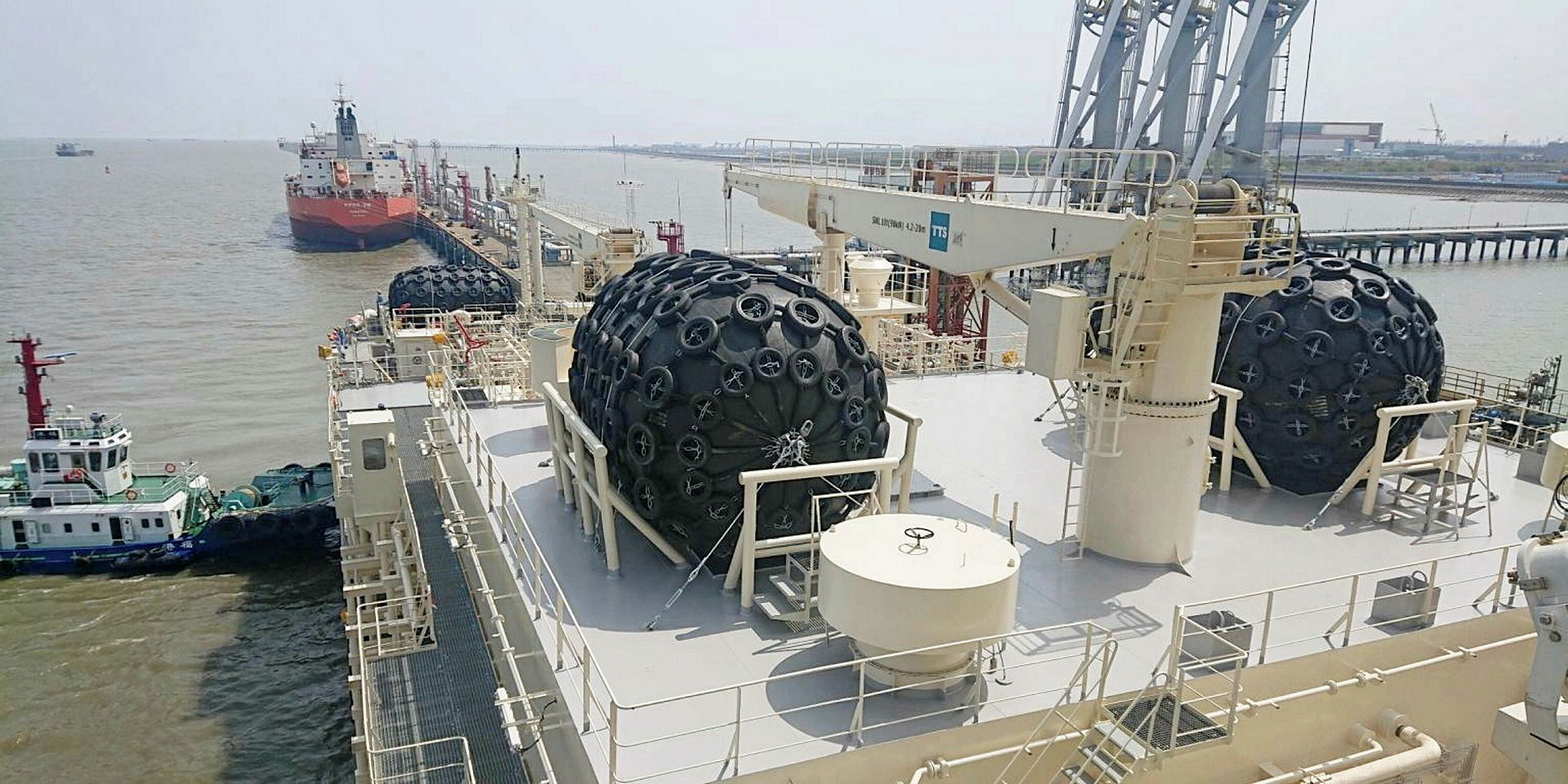
Technical experts see LNG propulsion as a “bridge” technology before future low-carbon fuels and technologies are developed.
The IMO has aimed to halve greenhouse gas emissions from international shipping by 2050, which the experts said will require new propulsion systems that have yet to be produced at scale.
Among the future fuels under development, green methane — synthetic fuel produced from captured CO2 via artificial photosynthesis — has chemical properties identical to LNG. In theory, the fuel can be dropped into existing LNG-fuelled ships and LNG bunkering infrastructure.
“To switch to green methane is only to bunker a different fuel. You don’t need to change anything in the system,” Lex Nijsen, head of four-stroke marine sales at MAN Energy Solutions, said.
Mikael Wideskog, general manager for technology strategy and innovation at Wartsila Marine, described LNG-fuelled ships as “a stepping stone”.
“When you have the infrastructure in place on shore and on board the vessel, it's easier to switch over,” Wideskog said.
Propulsion systems for other future fuels, such as hydrogen and ammonia, have so far only existed in small, pilot projects.
Nijsen said shipowners will need to demand more engines are powered by such fuels before they can be fully commercialised.
“Otherwise, it is very expensive to develop such systems for a very limited amount of engines,” he explained.
A push from regulators
Investors in shipping are understandably reluctant to adopt novel technologies, creating a chicken-and-egg dilemma for the development of low-emission shipping.
“Commercial shipowners need certainty,” Longitude Engineering managing director Dean Goves said. "To make those investments, they've got to have confidence that the technology is proven.
“They don't want to be spending money on inventing new technology on their ships.”
The IMO and European Union are expected to introduce new rules in the coming years to require shipowners to reduce their emissions through technical or operational measures, or purchase permits for emissions.
Drewry managing director Arjun Batra said shipowners will consider low-carbon fuels more seriously once there is regulatory certainty.
“The fuel of the future is still to be decided upon and invented," Batra said. "All the technology is still to be developed.
“At the end [of the day], the only way you can do it is when somebody regulates and forces you to change it, isn’t it?”
